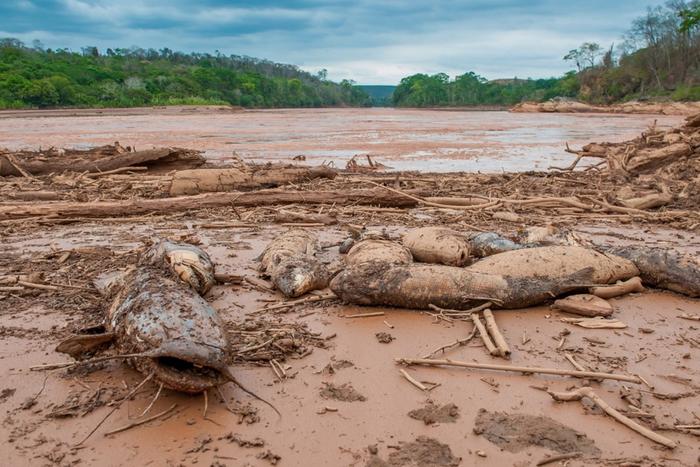Eight years since the collapse of the Fundão tailings dam in Mariana, Minas Gerais, Brazil, researchers have highlighted ongoing environmental and social devastation caused by the disaster.
Eight years since the collapse of the Fundão tailings dam in Mariana, Minas Gerais, Brazil, researchers have highlighted ongoing environmental and social devastation caused by the disaster.
A paper published in the open-access journal Nature Conservation underscores the persistent and growing impacts of the collapse, which ranks as one of the world’s most significant environmental tragedies.
Caused by the Samarco mining company, the 2015 collapse released approximately 50 million cubic meters of toxic mud, burying the village of Bento Rodrigues and severely contaminating over 600 kilometres of river channels and coastal habitats. More than 1 million people across 35 cities were affected, leading to 19 deaths, widespread health issues, and the displacement of hundreds of residents.
Researchers reveal that the environmental damage has only intensified over the years. High levels of heavy metals continue to threaten human and wildlife health, with significant bioaccumulation observed in endangered species like the Franciscana dolphin. Additionally, the introduction of invasive species has further destabilised the ecosystem.
The paper, led by Dr Cássio Cardoso Pereira and Fernando Goulart of Universidade Federal de Minas Gerais, criticises the slow and controversial response by the Renova Foundation, an entity created by the responsible companies to address the disaster’s aftermath. While some compensation and restoration efforts have been made, the researchers argue that these actions are insufficient and often inadequate.
One of the most concerning findings is the ongoing risk posed by similar structures across Brazil, where hundreds of dams remain in poor condition. The study advocates for the replacement of these dangerous dams with safer alternatives like dry mining, which significantly reduces the risk of future collapses.
“Urgent, science-based public policies are needed that prioritise the restoration of the Rio Doce basin, in addition to comprehensive compensation for affected communities. To achieve this, we need collaborations involving local and government oversight and independent scientific expertise to prevent further ecological and human disasters,” says Dr Cássio Cardoso Pereira.
As the region continues to face the compounded effects of climate change, with increasing cyclones and heavy rains worsening the spread of pollutants, the paper reminds us that the legacy of the Fundão disaster is far from over.
Original source
Pereira CC, Fernandes S, Fernandes GW, Goulart FF (2024) Eight years after the Fundão tailings dam collapse: chaos on the muddy banks. Nature Conservation 56: 77-82. https://doi.org/10.3897/natureconservation.56.133441
Journal
Nature Conservation
DOI
10.3897/natureconservation.56.133441
Article Title
Eight years after the Fundão tailings dam collapse: chaos on the muddy banks
Article Publication Date
20-Aug-2024





